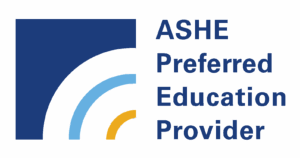The importance of cleaning over costs

Investing in top-tier cleaning protocols while managing a business and maximizing margins can be a difficult endeavour these days, but cleanliness cannot be compromised. As more time passes, some companies may have become more relaxed with their cleaning and sanitization protocols, but as we continue to adapt to a post-pandemic world, staying vigilant is key.
In a recent episode of Straight Talk! with Jeff Cross, ISSA President, Laurie Sewell, explains how cleaning remains an integral part of providing public health. Laurie emphasizes the need for education within the industry, as well as cleaning clients to embrace the notion that cleaning is about health, especially when addressing concerns about costs. When customers view cleaning simply as a budget line, they are not making the connection between cleaners and the work that they do to help maintain the health and welfare of the people who occupy the building. According to Laurie, in order to become advocates, cleaners need to understand the intention of their role. “We need to give them the why of their work, not just the how,” she confirms.
Using data is key in measuring value, and documenting work can help cleaners educate customers on cleaning beyond just providing a “clean-looking” space. Providing data on factors like how indoor air quality is impacted after cleaning can help customers see the value and the importance of cleaning for health.
RELATED: Staying ahead of restroom hygiene
Beyond safety, cleaner, healthier environments offer employers higher productivity and lower absenteeism. Laurie gives the example of better air quality and fewer pathogens impacting people with asthma and how that affects their quality of work and overall wellness.
Laurie examines institutions like hospitals with strict health and cleaning standards, citing third-party regulatory bodies as the reason that these standards exist and are upheld. She suggests that policymakers may be in a position to better define what a “healthy environment” looks like for students, in public facilities or at workplaces.
As we look to the future, Laurie gives some insight into the tools that cleaners can use to provide the necessary data for their customers to increase operational efficiency and lower some of the costs. For example, sensor technology can provide building managers with all kinds of insight into the health and wellness of their building. Further, indoor air quality testing is an important partner to the cleaning industry to help find the best ways to measure cleanliness.
Validating what ‘clean’ really means for customers and the importance of cleaning for health means focusing on education, data, and technology to create systems that are efficient and effective.
The post The importance of cleaning over costs appeared first on REMINET.

